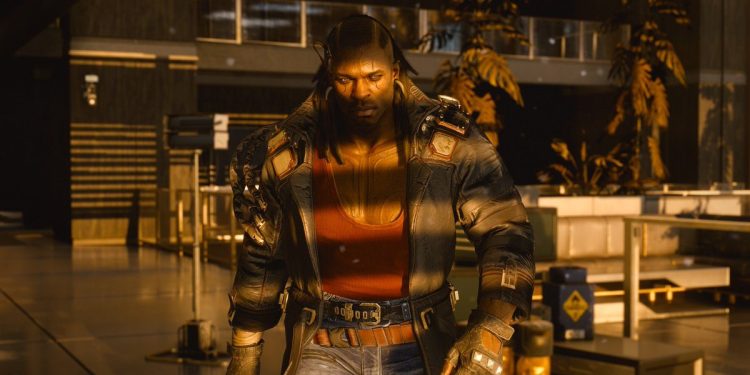About 10 months ago, Nvidia launched its RTX lineup of video cards. The company has spent that time doing exactly what I pointed out in my review: It’s faking it ’til it makes it. That’s because very few games have had support for the marquee feature of real-time ray tracing. But coming out of the Electronic Entertainment Expo (E3) game industry event in Los Angeles last week, it’s starting to feel like Nvidia no longer needs to fake the value of RTX.
Developers and publishers have announced ray-tracing support for some of the biggest upcoming blockbusters. That includes games from companies like Activision, Ubisoft, and CD Projekt Red that all use a number of different development tools and engines.
Here are the highlights:
- Control
- Call of Duty: Modern Warfare
- Vampire: The Masquerade — Bloodlines 2
- Cyberpunk 2077
- Watch Dogs: Legion
- Wolfenstein: Youngblood
It’s still novel when a game supports ray tracing, but Nvidia’s push for adoption is producing noticeable progress.
June 5th: The AI Audit in NYC
Join us next week in NYC to engage with top executive leaders, delving into strategies for auditing AI models to ensure fairness, optimal performance, and ethical compliance across diverse organizations. Secure your attendance for this exclusive invite-only event.
“There’s an indication that ray tracing is becoming mainstream,” Nvidia GPU product manager Justin Walker said during an interview at E3. “When we first introduced our Turing architecture and our ray-tracing architecture, it was all really new. Developers hadn’t had time to integrate the technology, and you kinda had to take our word for it.”
But now, Nvidia has had time to work with its partners. And many companies have implemented ray-tracing directly into their tools.
“Over the last couple of months, there’s been a ton of work and breakthroughs around ray tracing,” said Walker. “It’s been integrated into all the major game engines — Unreal, Frostbite, the Call of Duty engine. It really is coming to the biggest games. The infrastructure is there.”
Not all ray tracing is the same
It’s important to remember that ray tracing isn’t just one thing. The underlying technology is all about replicating the way light behaves in the physical world, but developers can pick and choose how to activate it.
Battlefield V, an early RTX game, only uses ray tracing for reflections. Shadow of the Tomb Raider only uses it for shadows. Metro: Exodus, however, has a global-illumination system that uses ray tracing.
And from my experience, the global illumination ray tracing is when visuals really start to look like a generational leap. Of course, global illumination is also the most computationally intensive implementation.
I asked Nvidia if the upcoming games are going to use RTX for shadows, reflections, global illumination, ambient occlusion, or all of the above. And for Watch Dogs, Call of Duty, Wolfenstein, and Vampire: The Masquerade — Bloodlines 2, the answer is unknown.
“That hasn’t been announced yet,” said Walker. “Part of it is that the developers are still working on it, and there are a lot of ways you can use RTX.”
But we do have details for a couple of the games.
Control
Developer Remedy is planning to use ray tracing for shadows, reflections, and global illumination. Those are the big three for RTX, and it means that Control is going to look excellent with a capable video card.
I got to see it in person at E3. During the demo, you could turn RTX on and off with the press of a button. The effect was startling because the game looks significantly more natural and lifelike with RTX on.
Cyberpunk 2077
Nvidia and developer CD Projekt Red only just announced this at E3, so I wasn’t expecting to get any concrete info. But the open-world cyber RPG is coming along nicely, and the studio seems to already know how it wants to use ray tracing.
Right now, the plan is to use it for ambient occlusion, which is when light struggles to reach corners and creases. AO is a very inexpensive use of RTX, but it’s also a more subtle visual effect.
The studio is also going to use something called “dynamic diffuse global illumination,” which is not exactly the same as real-time GI. Instead, it enables developers to use real-time ray tracing to see what light should look like. Artists can then bake that information into the game for traditional light-rendering techniques.
This is good for performance, and it can shorten how long it takes to develop a game. But it won’t have quite the same pop as actual real-time global illumination with ray tracing.
What’s next?
Ray tracing definitely feels like it is building momentum. These technological shifts always take time, and they have to start somewhere. But it’s easier to believe that ray tracing actually is a legitimate shift for computer graphics and not just a gimmick.
But as more big games adopt RTX in 2019 and 2020, the next step is to see if smaller studios begin adopting it as well. It’s important that it’s going to show up in Call of Duty, but I also want to quickly get to a point where we can just assume that ray tracing is included in a game by default.


